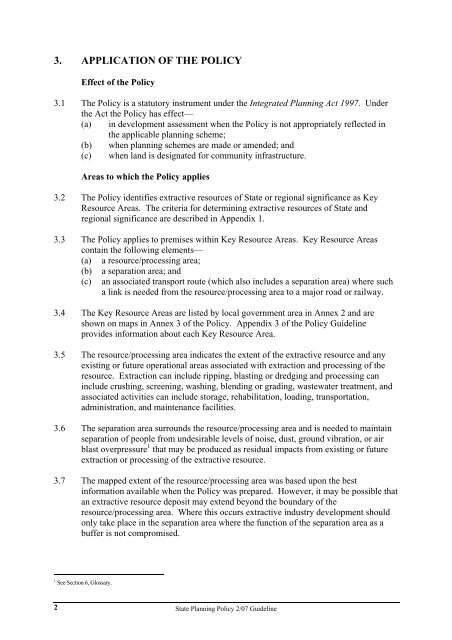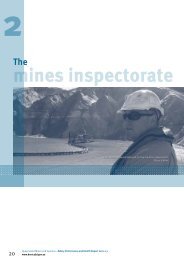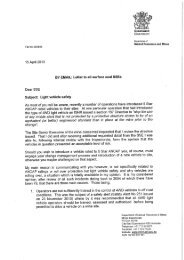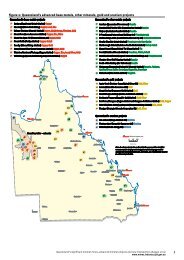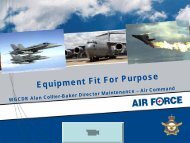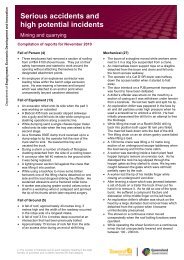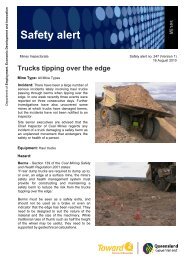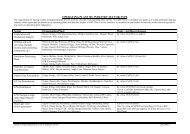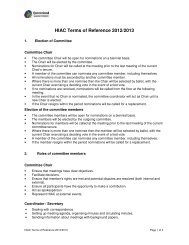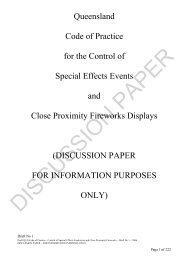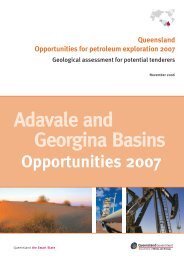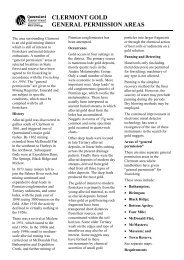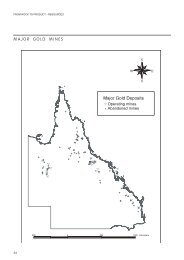State Planning Policy 2/07 Guideline - Queensland Mining and Safety
State Planning Policy 2/07 Guideline - Queensland Mining and Safety
State Planning Policy 2/07 Guideline - Queensland Mining and Safety
Create successful ePaper yourself
Turn your PDF publications into a flip-book with our unique Google optimized e-Paper software.
3. APPLICATION OF THE POLICY<br />
2<br />
Effect of the <strong>Policy</strong><br />
3.1 The <strong>Policy</strong> is a statutory instrument under the Integrated <strong>Planning</strong> Act 1997. Under<br />
the Act the <strong>Policy</strong> has effect—<br />
(a) in development assessment when the <strong>Policy</strong> is not appropriately reflected in<br />
the applicable planning scheme;<br />
(b) when planning schemes are made or amended; <strong>and</strong><br />
(c) when l<strong>and</strong> is designated for community infrastructure.<br />
Areas to which the <strong>Policy</strong> applies<br />
3.2 The <strong>Policy</strong> identifies extractive resources of <strong>State</strong> or regional significance as Key<br />
Resource Areas. The criteria for determining extractive resources of <strong>State</strong> <strong>and</strong><br />
regional significance are described in Appendix 1.<br />
3.3 The <strong>Policy</strong> applies to premises within Key Resource Areas. Key Resource Areas<br />
contain the following elements—<br />
(a) a resource/processing area;<br />
(b) a separation area; <strong>and</strong><br />
(c) an associated transport route (which also includes a separation area) where such<br />
a link is needed from the resource/processing area to a major road or railway.<br />
3.4 The Key Resource Areas are listed by local government area in Annex 2 <strong>and</strong> are<br />
shown on maps in Annex 3 of the <strong>Policy</strong>. Appendix 3 of the <strong>Policy</strong> <strong>Guideline</strong><br />
provides information about each Key Resource Area.<br />
3.5 The resource/processing area indicates the extent of the extractive resource <strong>and</strong> any<br />
existing or future operational areas associated with extraction <strong>and</strong> processing of the<br />
resource. Extraction can include ripping, blasting or dredging <strong>and</strong> processing can<br />
include crushing, screening, washing, blending or grading, wastewater treatment, <strong>and</strong><br />
associated activities can include storage, rehabilitation, loading, transportation,<br />
administration, <strong>and</strong> maintenance facilities.<br />
3.6 The separation area surrounds the resource/processing area <strong>and</strong> is needed to maintain<br />
separation of people from undesirable levels of noise, dust, ground vibration, or air<br />
blast overpressure 1 that may be produced as residual impacts from existing or future<br />
extraction or processing of the extractive resource.<br />
3.7 The mapped extent of the resource/processing area was based upon the best<br />
information available when the <strong>Policy</strong> was prepared. However, it may be possible that<br />
an extractive resource deposit may extend beyond the boundary of the<br />
resource/processing area. Where this occurs extractive industry development should<br />
only take place in the separation area where the function of the separation area as a<br />
buffer is not compromised.<br />
1 See Section 6, Glossary.<br />
<strong>State</strong> <strong>Planning</strong> <strong>Policy</strong> 2/<strong>07</strong> <strong>Guideline</strong>


